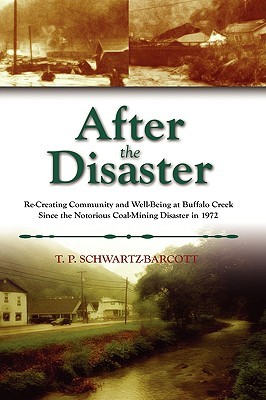
- We will send in 10–14 business days.
- Author: T P Schwartz-Barcott
- Publisher: Cambria Press
- Year: 2008
- Pages: 560
- ISBN-10: 1604975504
- ISBN-13: 9781604975505
- Format: 15.2 x 22.9 x 3.5 cm, kieti viršeliai
- Language: English
- SAVE -10% with code: EXTRA
Reviews
Description
Scholars who have studied rural people and places often have focused on a snapshot in time as they attempt to understand how human beings are impacted by change at the local community level. Community once was declared dead as a unit of analysis for social science scholars, yet the citizens who live in these places find that their attachments to place and to other people in these places are crucial to their lives. Too often those who study such phenomena fail to examine the longterm impacts of shocks to place and people. This methodological failing often leads to exaggerated estimations of the impacts of disasters on communities and their residents. Human beings and the social structures they create are resilient. In this book, the author fills some of the gaps in our knowledge when he returns repeatedly to Buffalo Creek for several years, long after the flash flood departed in 1972. It is not often that a scholar with empathy for rural citizens returns to a place for many years to understand the longer term implications of disasters for individual well-being. This book provides a view of a place long after the tragedy has taken place. It illustrates how community residents struggle to re-create community and well-being after a serious ecological shock. The resilience of the human character and the adaptability of community structures form the core of this book. Taking us through the days before the flash flood at Buffalo Creek, the author paints a portrait of human failings and of growing environmental danger. He draws on the voices that were there on the scene. He also gives us a detailed review of newspaper accounts, government documents, and research studies, including Kai Erikson's classic disaster study, Everything in Its Path. From these many sources, we get a multi-faceted account of how the disaster occurred and how dozens of local, state, and federal agencies responded to it. After the Disaster provides detailed discussions with local residents, survey data, and a gift for integration that allows the reader to gain an understanding of how disasters impact communities in the short term and in the long term. The latter is one of the most important contributions of this book.
EXTRA 10 % discount with code: EXTRA
The promotion ends in 23d.10:07:32
The discount code is valid when purchasing from 10 €. Discounts do not stack.
- Author: T P Schwartz-Barcott
- Publisher: Cambria Press
- Year: 2008
- Pages: 560
- ISBN-10: 1604975504
- ISBN-13: 9781604975505
- Format: 15.2 x 22.9 x 3.5 cm, kieti viršeliai
- Language: English English
Scholars who have studied rural people and places often have focused on a snapshot in time as they attempt to understand how human beings are impacted by change at the local community level. Community once was declared dead as a unit of analysis for social science scholars, yet the citizens who live in these places find that their attachments to place and to other people in these places are crucial to their lives. Too often those who study such phenomena fail to examine the longterm impacts of shocks to place and people. This methodological failing often leads to exaggerated estimations of the impacts of disasters on communities and their residents. Human beings and the social structures they create are resilient. In this book, the author fills some of the gaps in our knowledge when he returns repeatedly to Buffalo Creek for several years, long after the flash flood departed in 1972. It is not often that a scholar with empathy for rural citizens returns to a place for many years to understand the longer term implications of disasters for individual well-being. This book provides a view of a place long after the tragedy has taken place. It illustrates how community residents struggle to re-create community and well-being after a serious ecological shock. The resilience of the human character and the adaptability of community structures form the core of this book. Taking us through the days before the flash flood at Buffalo Creek, the author paints a portrait of human failings and of growing environmental danger. He draws on the voices that were there on the scene. He also gives us a detailed review of newspaper accounts, government documents, and research studies, including Kai Erikson's classic disaster study, Everything in Its Path. From these many sources, we get a multi-faceted account of how the disaster occurred and how dozens of local, state, and federal agencies responded to it. After the Disaster provides detailed discussions with local residents, survey data, and a gift for integration that allows the reader to gain an understanding of how disasters impact communities in the short term and in the long term. The latter is one of the most important contributions of this book.


Reviews